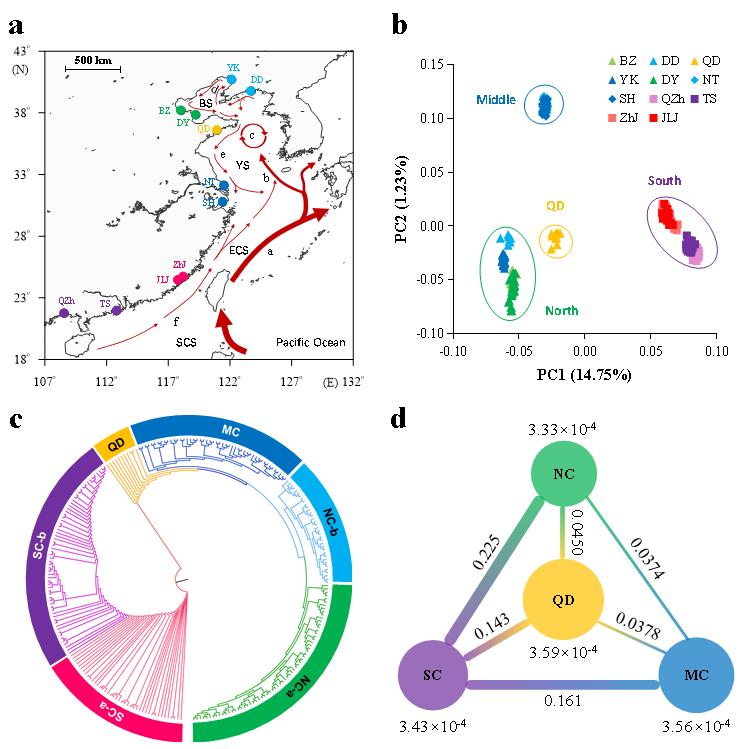Climate change poses a serious threat to global biodiversity and the stability of ecosystems. The impact may vary among different organisms, and changes in keystone species may have a large effect on stability of an ecosystem.
The estuarine (Jinjiang or Suminoe) oysters (Crassostrea ariakensis) are keystone species in coastal and estuarine ecology providing critical ecological services as filter-feeders and habitat engineers. Estuarine oysters are critical livehood fisheries, which broadly distributed in estuaries of China as oyster reefs historically over large latitude because of their rapid growth rate.
However, due to factors as the habitat destruction, overfishing, land-based pollution and decrease in surface runoff, resources of wild estuarine oysters are sharply reduced, especially for sporadic distribution at north China and even functional extinction at some estuaries. Thus, it's urgent to conduct wild resources' repair and artificial breeding of estuarine oysters.
Recently, Genetics & Evolution of Marine Mollusks team led by prof. ZHANG Guofan and prof. LI Li at the Institute of Oceanology, Chinese Academy of Sciences (IOCAS), revealed evolutionary mechanisms of environmental adaptation in oysters. This study was published in Communications Biology, which provided insights into the effects of climate change on genetic structure of oysters' resources and the role of plasticity in adaptive evolution.
To explore population structure and adaptive mechanisms to temperature and salinity, they constructed a chromosomal-level genome assembly for estuarine oysters (613.89-Mb) with contig N50 of 6.97-Mb, which is the most contiguous assembly produced with nanopore long-read sequencing for a bivalve mollusc. Whole-genome resequencing data revealed the population structure including northern China, middle China and southern China populations. Environmental gradients in temperature and salinity, directions of ocean currents, historical glaciation and geological events contribute to the formation of this genetic structure. Selective sweep analysis identified 51 genes under selection and most of them were responsive to temperature and salinity changes.
Moreover, environmental responsive genes with high plasticity exhibited higher genetic divergence at upstream noncoding regulatory regions, which is consistent with previous study that noncoding variations promote adaptive divergence between two sister oyster species. These findings can further facilitate the demarcation of genetic units, assessment of germplasm resources and utilization of excellent genetic variations.
This study was supported by the Strategic Priority Research Program of the Chinese Academy of Sciences, the National Key R&D Program of China, the Key Deployment Project of Centre for Ocean Mega-Research of Science, Chinese Academy of Sciences, etc.

Genetic structure of wild estuarine oysters’ resources in China
Ao Li#, He Dai#, Ximing Guo#, Ziyan Zhang, Kexin Zhang, Chaogang Wang, Xinxing Wang, Wei Wang, Hongju Chen, Xumin Li, Hongkun Zheng, Li Li*, Guofan Zhang*. Genome of the estuarine oyster provides insights into climate impact and adaptive plasticity. Communications Biology, 2021, 4(1):1287. https://www.nature.com/articles/s42003-021-02823-6
(Editor: ZHANG Yiyi)
|
|

Address: 7 Nanhai Road, Qingdao, Shandong 266071, China
Tel: 86-532-82898902 Fax: 86-532-82898612 E-mail: iocas@qdio.ac.cn


